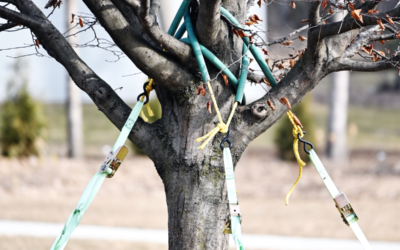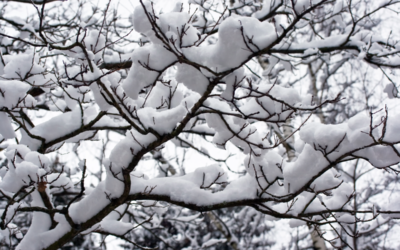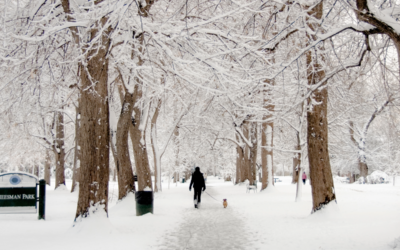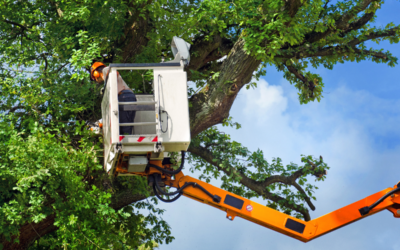Colorado’s spring storms are notorious for wreaking havoc on trees in urbanized areas. Cyclonic winds and lightning strikes are common and trees weakened by soil shifts, nearby construction or poor health and maintenance are most likely to be affected. While you can’t fool Mother Nature, there are some things you can do to cut down on the tricks she plays on you.
Visually Inspect Trees for Damage and Unbalanced Growth
Start by doing a visual inspection of your trees—and neighboring ones that might pose a risk to your property. Springtime, when they’ve leafed out, in the fall after the leaves have dropped, and after any big storm are good times for a walk-around.
Take along a pair of binoculars so you can see the tops clearly. Look for signs of damage to the roots, trunk, and branches. Note any signs of unbalanced growth that might affect the tree’s stability. While it’s normal for trees to lean a little, poor weight distribution can cause trouble. Look at the area around the tree’s base. Exposed roots or cracked or heaving soil are signs that the tree may not be stable enough to withstand strong winds or heavy snow loads.
Check for Signs of Root Decay
Some trees can develop multiple trunks. These can throw the tree off balance and are weak spots for splitting under stress. Mushrooms or fungus growth and carpenter ants can be signs of root decay from age, disease, or construction damage and should be addressed quickly.
If you see any signs of potential trouble, or just want to reassure yourself that you haven’t overlooked anything, call a certified arborist to come have a look. They can assess the situation, diagnose problems (including internal damage you can’t see), and offer remedies.
Balance the Tree by Trimming, Cabling and Bracing
Sometimes, trouble can be avoided with a professional trimming to balance the tree and make it more attractive in the bargain. Cabling can stabilize larger trees against storms and let them reestablish a strong anchoring system without danger of falling. Braces are steel rods inserted into the trunks to support weak unions and split trunks on smaller trees.
Cables and braces can also encourage trees to grow in the right direction and protect younger, weaker trees from bumps and strong winds. Arborists have the knowledge and equipment to cable and brace trees properly without causing damage or stress.
Invest with Healthy, Well-Maintained Trees
When you consider that attractive, well-maintained trees can add 10% or more to a home’s value, the cost of keeping them healthy and safe represents a good investment. And considering the damage a fallen branch or blown-over tree can do, it’s good insurance, too.
Donovan Arborists offers complete cable and bracing services for Denver-area trees. We’re happy to give free estimates to homeowners and property managers for any services they may need.




